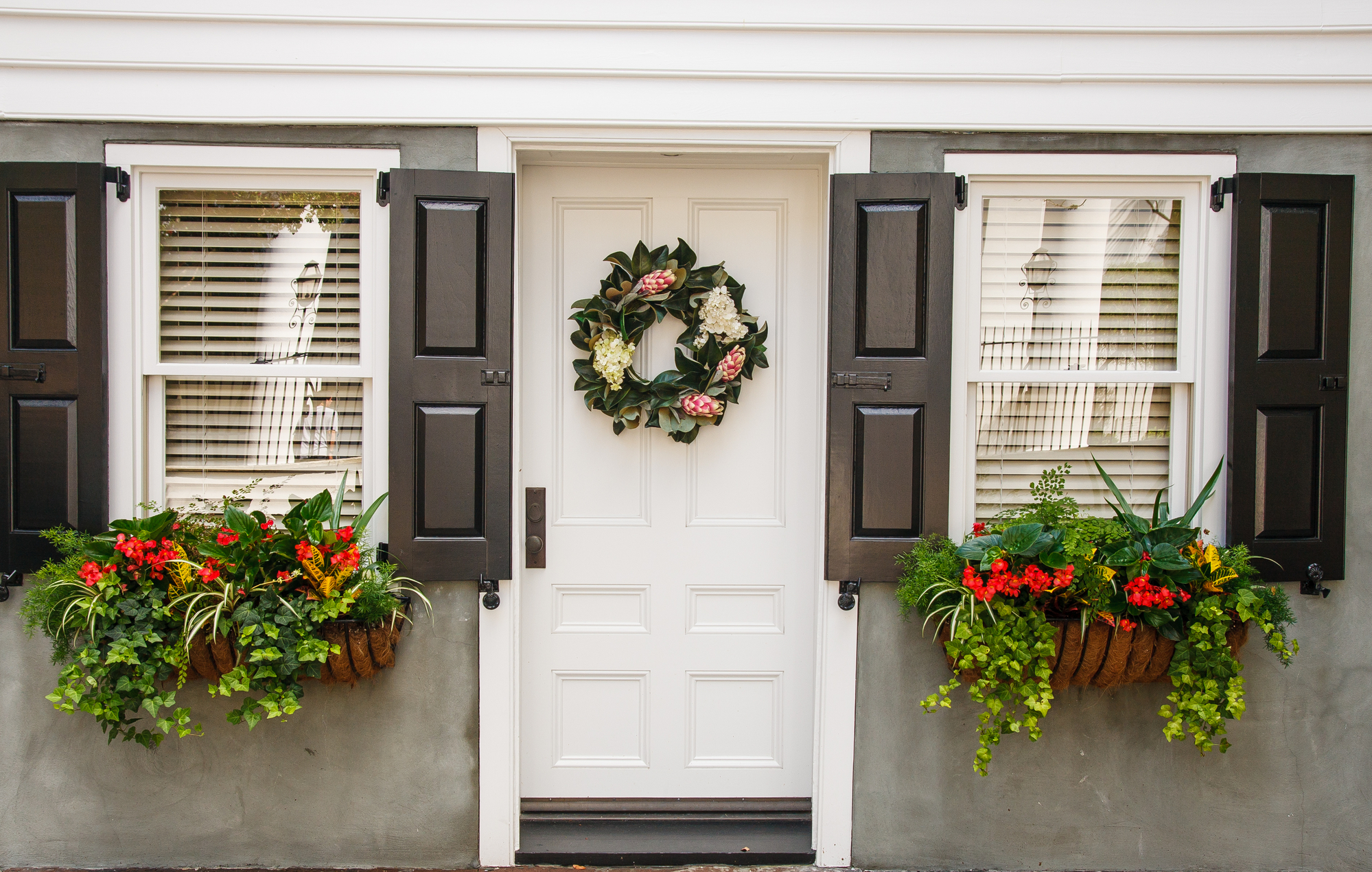Window boxes are a fantastic way to bring color and interest to the upper levels of your home. If you’ve never planted a window box before we promise it’s a very simple process. There are just a few things you’ll need to consider before planting.
The Box– Window boxes work on the same principles as flower pots. The material that it’s made of and its style and size will all contribute to the plants health and vigor.
Plastic window boxes are great and today, come in all types of finishes and colors. They hold moisture well and don’t heat up quickly. There are also plastic styles that are self watering which leads to less work for you!
Wooden window boxes can add tons of rustic character to your home but be sure they contain some type of liner or they may lose soil through cracks. Also be sure to water thoroughly as water may also run off through those cracks if the box is not lined.
The size of your box is also very important. If adequate room is not available for roots to grow your plants may become stunted or even die as they compete for soil and nutrients.
The Soil– Just as with flower pots, your plants will only have the nutrients that you add to them. Starting with a great soil that contains micro nutrients is essential for healthy plant growth! Compost is always a great addition for any container. It adds a light texture to the soil which allows for proper drainage and air circulation.
Watering– Window boxes always require a little more attention than other vessels. Because they are placed on a building which may heat up quickly, the soil will also dry faster. One great product to try is Soil Moist. These small beads absorb water and release it slowly back into the soil cutting down on the number of watering you may need to do.
The Plants-Match your plants to your sun exposure. Identical window boxes can be a stunning statement but, if one box will receive full sun and the other only minimal bright light, one box will flourish while the other struggles.
The Design– At the garden center we love the thriller, filler and spiller concept for our container pots and, it works just as well with flower boxes! The only difference is the height and placement of your thriller. In a patio pot we normally place the thriller in the middle or, in the back of the pot. If the thriller you chose grows taller than 8-10” you may want to place them on both ends of your box so that the view out of your window is not obstructed.
If you run into the challenge of light exposure that we mentioned earlier, there is a solution! Working with the same color scheme, or with plants that are not picky about light, you can create a design where your boxes will complement each other.
For example, if your sun box contains trailing white Calibrachoa, use white trailing Torenia in your shade box. The leaf and flower shape are similar enough that they will compliment rather than distract.
And thankfully, there are annual choices that are not picky about the light they receive. The list below offers the best choices if you want identical boxes with different light exposures.
| Thrillers | Fillers | Spillers |
|---|---|---|
| Spikes | Impatiens | Creeping Jenny |
| Salvia | Begonias | Creeping Fig |
| Caladium | Lobelia | Sweet Potato Vine |
| Coleus | Browallia | Ivy |
| Pansies | Dichondria | |
| Ageratum | Lamium | |
| Bacopa | Licorice Plant | |
| Vinca | Vinca Vine |
There are also several annuals that have been developed with sun and shade counter parts, so if you work within a color story your boxes can coordinate quite well. Impatiens are one of those flowers. Although the size of the flowers on these cousins is slightly different, the colors are the same.
Coleus is another great example. The plant we normally associate with shade now has a kaleidoscope of color varieties that have been developed just for sun.
With so many options, everyone can add a splash of color and interest to an area of the house that might otherwise lack some pizzazz! Come talk to us and we’ll help you think outside that box!

